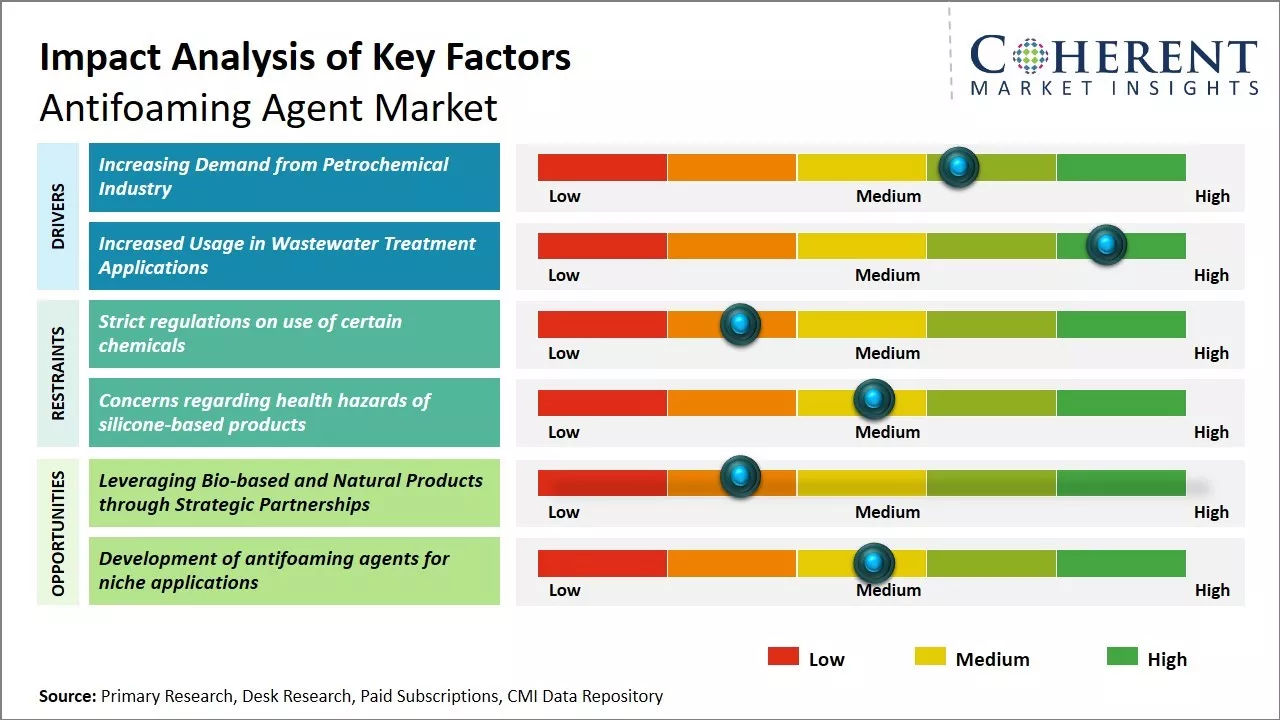The Antifoaming Agent Market is estimated to be valued at USD 6.37 Bn in 2025 and is expected to reach USD 8.79 Bn by 2032, exhibiting a compound annual growth rate (CAGR) of 4.7% from 2025 to 2032.

To learn more about this report, Request sample copy
A wide range of applications across various end-use industries such as petrochemicals, pharmaceuticals, pulp and paper, and others are expected to drive the demand for antifoaming agents over the forecast period. The market is witnessing increased demand from developing economies where industrial growth is robust. Also, stringent environmental regulations regarding the use of harsh chemicals with aquatic toxicity are prompting manufacturers to invest in eco-friendly antifoaming agent formulations. Regulations coupled with sustainability priorities of end users are defining the current market trend that seeks environmentally acceptable products.
Increasing Demand from Petrochemical Industry
The petrochemical industry has seen tremendous growth over the past few decades owing to rising demand for plastics, chemicals, and other petroleum products from various end-use industries such as construction, automotive and packaging. Foaming is a commonly observed problem in petroleum refining and petrochemical operations due to the presence of surfactants in crude oil, refined products, and chemical intermediates. Left uncontrolled, foaming can cause loss of product quality, reduction in yields, equipment damage, and disruption of plant operations. To address this issue, antifoaming agents are widely utilized across various units involved in exploration, extraction, transportation, storage, refinement, and processing of oil and gas. They help breakdown foam and prevent its further formation, ensuring a smooth production process. With rising petroleum consumption globally to meet expanding needs of evolving economies, production volumes from refineries and petrochemical plants have increased substantially. This has driven up demand for defoaming agents to maintain efficiency and optimize output. Furthermore, stringent quality and safety regulations imposed by regulatory authorities have compelled petroleum companies to deploy advanced antifoaming techniques. Growing complexities in refining associated with processing of heavier crude varieties also accentuate the need for effective defoaming chemicals. Overall, the massive growth trajectory of the petrochemical sector worldwide is a major factor propelling the antifoaming agent market growth, therefore growing petrochemical industry is expected to drive the market growth. For instance, according to data published by Ministry of Petroleum in January 2025, India's chemical and petrochemical industry is expected to grow to about USD 300 billion by 2025.
Joining thousands of companies around the world committed to making the Excellent Business Solutions.
View All Our Clients